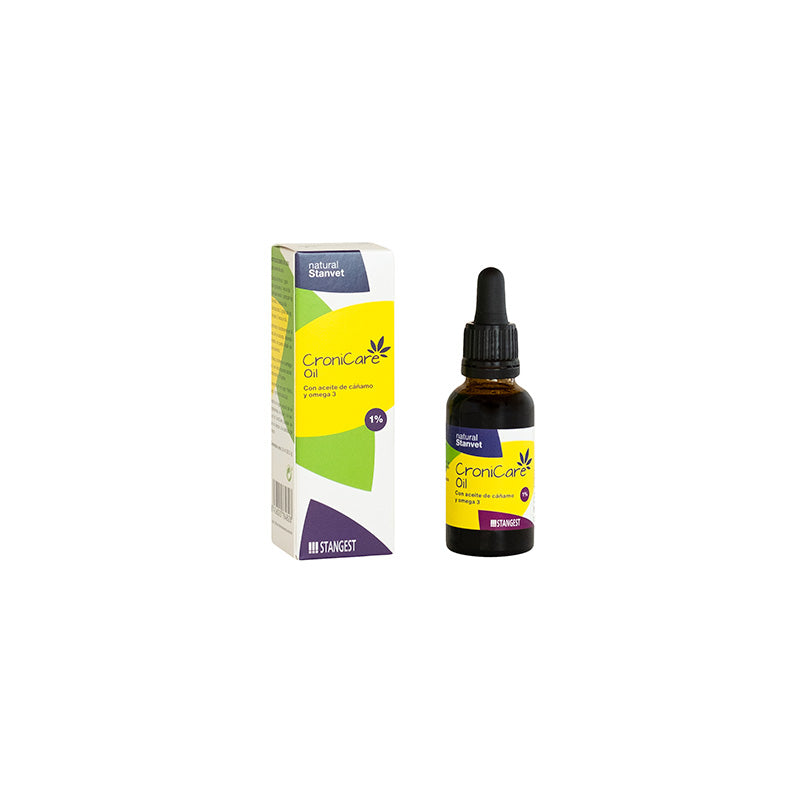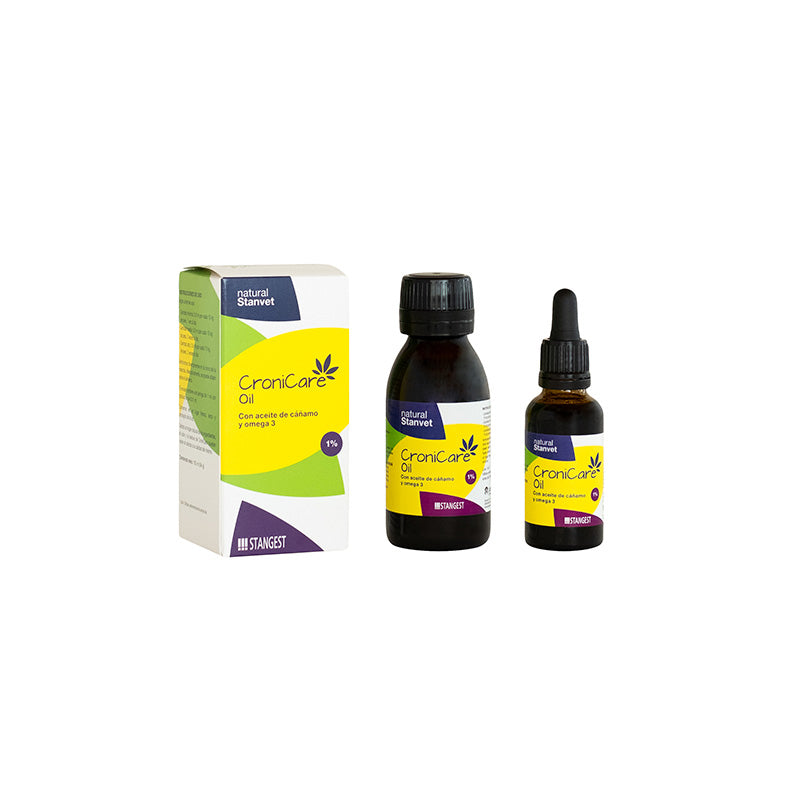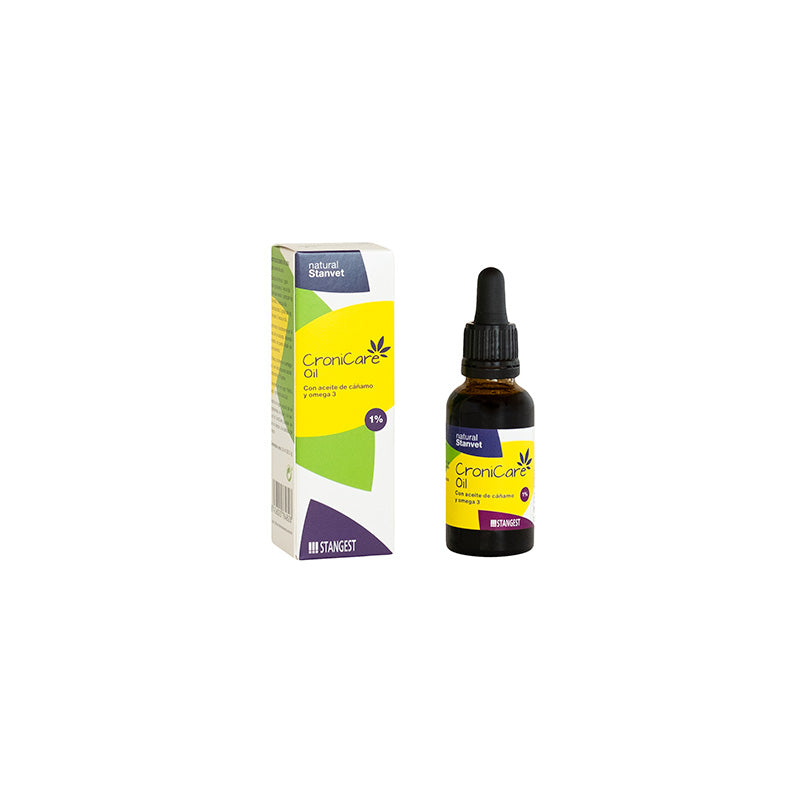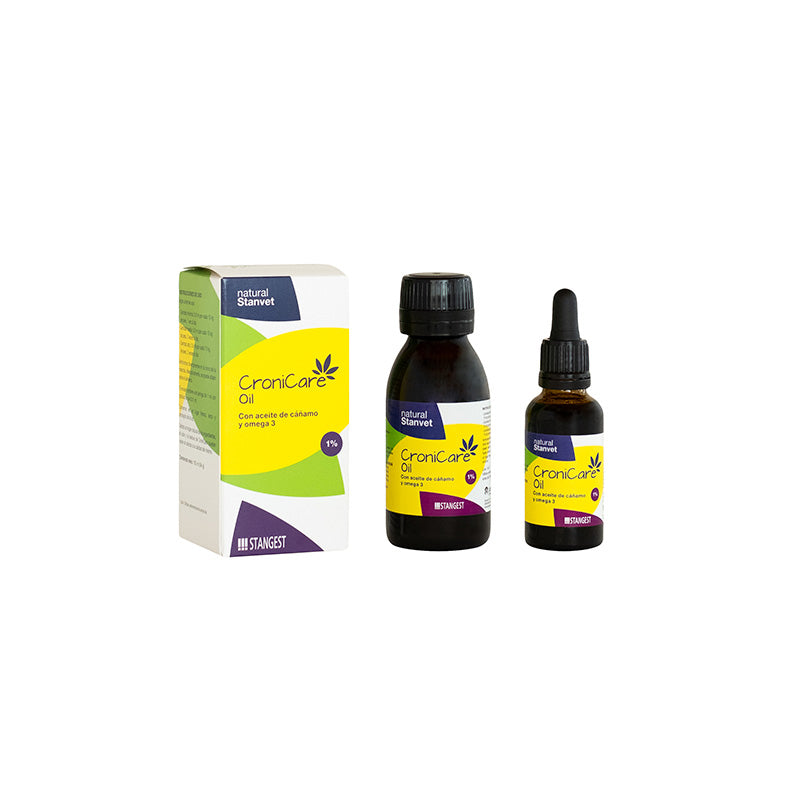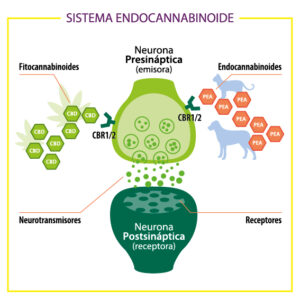Cronicare Oil 30ml | Chronic Pain, Anxiety | Stanvet
Cronicare Oil 30ml | Chronic Pain, Anxiety | Stanvet
Couldn't load pickup availability
CroniCare Oil It's a product specially formulated for pets. It contains a blend of hemp oil, omega-3 fatty acids, and medium-chain triglycerides. It's a complementary food that provides key nutrients for dogs and cats, such as phytocannabinoids, essential fatty acids, proteins, and minerals, among others.
Composition: Fish oil, hemp oil, medium chain triglycerides.
Analytical components: Crude protein: 0.13%, Crude fat: 89.5%, Crude fibers: 11.9%, Crude ash: 0.12%.
Each milliliter of product contains 285 mg of total Omega 3, of which:
– EPA: 145 mg
– DHA: 95 mg
Instructions for use
Preferably, administer directly into the dog or cat's mouth. Alternatively, it can be added to food.
Administration Container 30 ml:
– Minimum amount: 1 drop per kg of weight, once a day
– Average amount: 1 drop per kg of weight, 2 times a day
– High quantity: 2 drops per kg of weight, 2 times a day
Administration Container 100 ml:
– Minimum amount: 0.3 ml per 10 kg of weight, once a day
– Average amount: 0.3 ml per 10 kg of weight, 2 times a day
– High amount: 0.6 ml per 10 kg of weight, 2 times a day
Shake before use. Store in a cool, dry place away from light.
Due to the natural origin of the ingredients, the color and texture of CroniCare may vary without affecting its quality.
HEMP
What does hemp provide?
Hemp is a variety of Cannabis sativa suitable for animal feed. It is rich in nutrients that promote animal health: phytocannabinoids, terpenes, flavonoids, fatty acids, proteins, and minerals, among others.
Why is the whole hemp plant used?
Hemp provides different phytocannabinoids that work together to produce a better response compared to individual molecules. This synergy is known as the Entourage Effect. Optimal absorption of hemp. Phytocannabinoids are molecules with a marked fat-soluble nature, so their oral absorption can vary greatly depending on the product formulation.
In CroniCare, several ingredients accompany and protect the phytocannabinoids to ensure their bioavailability. Fatty acids, especially long-chain fatty acids such as EPA, DHA, and behenic acid, have been shown to promote the absorption of phytocannabinoids from the gut directly into the lymphatic vessels, bypassing the first pass through the liver. This maximizes the absorption and bioavailability of phytocannabinoids.
The endocannabinoid system
All vertebrates possess the endocannabinoid system (ECS), a complex regulatory structure that includes receptors, ligands (endocannabinoids), and synthesis and degradation enzymes. Two main types of receptors have been described, CBR1 and CBR2, which interact with the ligands in a lock-and-key fashion. These ligands can be classified as phytocannabinoids, if found in plants, such as cannabidiol (CBD), or endocannabinoids, if produced endogenously in the body, such as PEA.
Through these interactions, the ECS acts as a master regulator that promotes body homeostasis, coordinating a wide variety of physiological processes, including neurotransmission, pain sensation, the release of pro-inflammatory cytokines, and emotional well-being. An imbalance in the ECS can severely disrupt the processes it regulates. In fact, alterations in the ECS have been associated with various canine pathologies. Therefore, molecules that can regulate ECS activity have sparked great scientific interest. This is the case with phytocannabinoids, which interact at various key points in the ECS to promote the rebalancing of the physiological processes it regulates.
OMEGA 3
Oily fish is rich in essential omega-3 fatty acids, primarily EPA and DHA. These polyunsaturated lipids are directly incorporated into cell membranes, promoting optimal cognitive, cardiovascular, and joint function.
TCM
MCTs, or medium-chain triglycerides, are a group of lipids obtained from coconut oil, rich in caprylic, capric, and lauric acids. They are a good source of easily metabolized energy and contribute to the normal functioning of the cognitive and cerebral systems of dogs and cats.
Compartir
